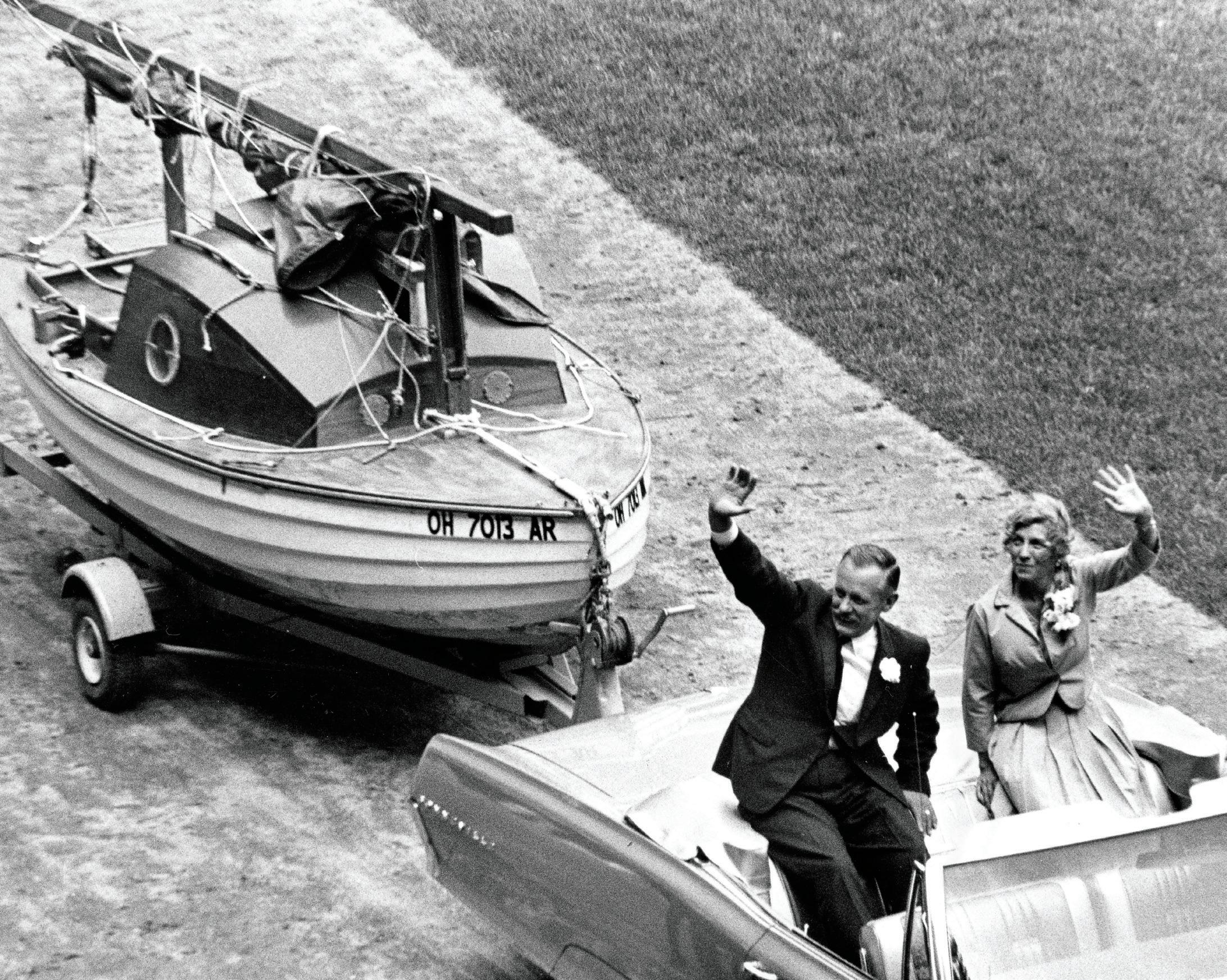
1 minute read
LOOK BACK On Aug. 17, 1965, Robert Manry completed a solo transatlantic voyage.
SEATED ON THE CUSHIONS of a convertible, Robert Manry and his wife, Virginia, wave at Cleveland Municipal Stadium with Manry’s sailboat, Tinkerbelle, in tow. The 15-minute parade in Public Square for 130,000 serves as a stark contrast to Manry’s 78-day solo transatlantic voyage from Falmouth, Massachusetts, to Falmouth, England.
Manry left for his 3,200-mile adventure on June 1 without fanfare, quietly jotting in a note to his employer, The Plain Dealer, that he would be out until Aug. 29.
Recognizing their reserved copy editor as news fodder, editors launched a hurricane of stories about Manry printed alongside reports on the Los Angeles riots and Vietnam, comparing him to Charles Lindbergh and Christopher Columbus.
Phosphorescent streaks, gallivanting dolphins and a mysterious bird that walked across water are all recorded in Manry’s log, but the crowd of 50,000 that awaited him in England required further navigation. Refusing to wear the promotional gear The Plain Dealer had sent, Manry kissed Cornwall soil Aug. 17 in his red windbreaker, dazed and 40 pounds lighter.
Back home in Cleveland, he was described as tan, muscular and unfazed. The public joined the press in romanticizing Manry's journey as one of good, old-fashioned American heroism.
Referred to simply as "the boat" — because its real name was "not quite heroic enough" — Tinkerbelle would be gawked at for its 13-and-a-half-foot length, if masses could spy its scarlet sail at all. Today, Tinkerbelle rests in the Western Reserve Historical Society, while Manry Park in Willowick memorializes its owner.










